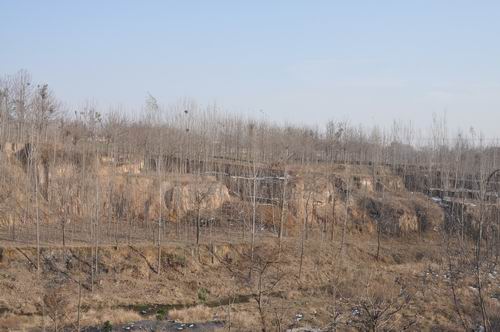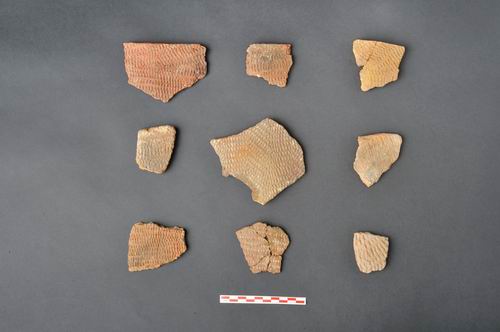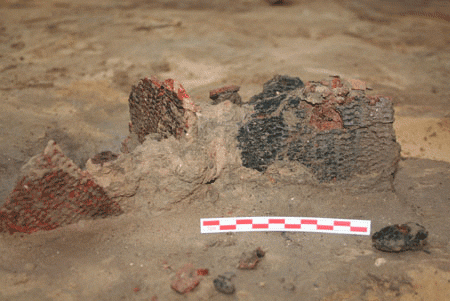Important excavation at Lijiagou Site, Xinmi, Henan
The Lijiagou site is located at the west Lijiagou village of the Yuecun Town in Xinmi city of the Henan Province. The site is within the massif with low attitude, and the College of Archaeology and Museology of Peking University and the Zhengzhou Municipal Institute of Cultural Relics and Archaeology jointly conducted a rescue excavation in Autumn of 2009. Prehistoric cultural deposits were identified between 10500 and 8600 years ago. Typical microliths made from micro cores and microflakes were unearthed in the lower part of the cultural layer. Coarse pottery with corded and incised patterns as well as stone grinders were identified in the upper part of the cultural layer.

The site can be divided into Northern and Southern zones and the excavated area is around 30 square meters. Stratigraphy in the Northern zone is 3m thick with 7 layers, whereas there are 4 layers in the south. According to the AMS radiometric dating, the fourth layer of the southern zone can be dated back 10300-10500 years ago (rectified with dendrochronology) and the fourth and fifth layers of the northern zone can be dated back 9000 and 8600 years ago respectively (rectified with dendrochronology).

Palaeolithic remains are identified in the fourth layer of the Southern zone. There exists microliths with boat and column shape and small quantity of tools using stone flakes as roughout. This further illustrates that early habitants of the Lijiagou site had mastered the techniques of using flakes to manufacture stone tools. The mature craftsmanship of stone tools also generates typical microlith assemblage such as scrapers, daggers, stone arrowheads and engraving tools. These decent stone tools have sharp edges and are easy to carry. They are suitable for professional hunters performing lengthy hunting activities.

Other than typical microliths, larger size stone products were unearthed in the Lijiagou site during the early stage of the excavation. Retouch of these stone implements is simple, as artificial chipped traces can be seen clearly. Large amount of stone pieces transported from other area were also identified. Animal bones unearthed are categorized as herbivores, mainly cattle (Bos), horse (Equus) and deer (Hydropotes).
Neolithic cultural remains are mainly situated in No. 4 to 6 layers of the Northern zone. There is a significant decline in using microliths, as the size of stone products is relatively larger. This is the result from various types of human subsistence activities. 100 pieces of coarse gritted pottery shreds were unearthed with colour ranging from light greyish yellow to reddish brown, identified as barrel-shaped implements indifferences in morphology. Most of these shreds were decorated in cord pattern with a few having incised pattern. Besides, pottery is differed from the local Peiligang culture of later period. Apart from cultural remains, clear traces of human activities can be found in the Northern zone. The most distinctive feature of the site is the assembly area of stones. The central area is filled with grinders, anvils and lots of flat stone pieces. There are a large number of burned stone pieces, pottery shreds, as well as animal bone fragments in the area. After identifying the animal bones, most of them can be categorized as small / medium size deer (Hydropotes).

The Lijiagou site clearly expounds the strong mobility of prehistoric habitants in the area, especially the history of transformation from hunting herbivore as the primary target in Palaeolithic period to the dwelling formation, equal stress on hunting and gathering in Neolithic period. The site also provides prominent archaeological evidence for the development and transition from Palaeolithic to Neolithic periods. This site is chosen as one of the 2009 Ten Most Important Archaeological Discoveries in China. (Translated by Li Langlin)

